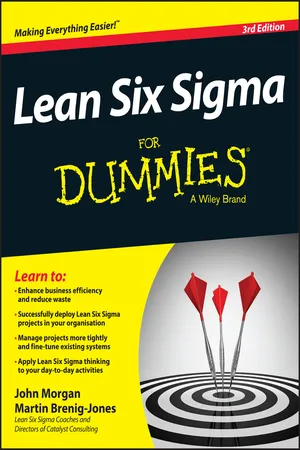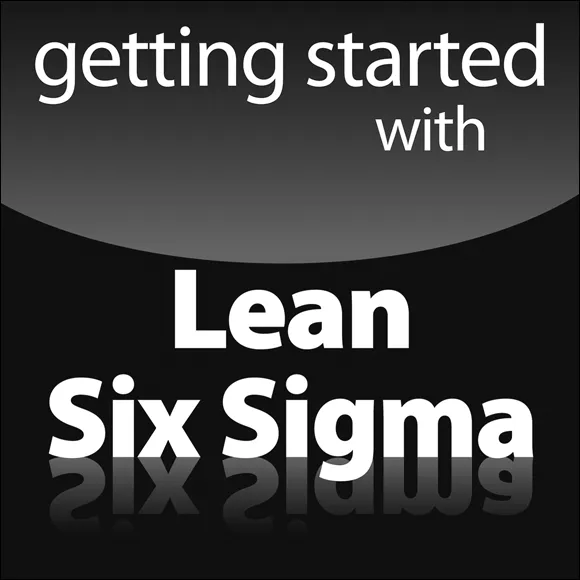
- English
- ePUB (mobile friendly)
- Available on iOS & Android
Lean Six Sigma For Dummies
About This Book
Maximise the quality and efficiency of your organisation with Lean Six Sigma
Are you looking to make your organisation more effective and productive? If you answered "yes, " you need to change the way it thinks. Combining the leading improvement methods of Six Sigma and Lean, this winning technique drives performance to the next level—and this friendly and accessible guide shows you how. The third edition of Lean Six Sigma For Dummies outlines the key concepts of this strategy and explains how you can use it to get the very best out of your team and your business.
The jargon-crowded language and theory of Lean Six Sigma can be intimidating for both beginners and experienced users. Written in plain English and packed with lots of helpful examples, this easy-to-follow guide arms you with tools and techniques for implementing Lean Six Sigma and offers guidance on everything from policy deployment to managing change in your organisation—and everything in between.
- Gives you plain-English explanations of complicated jargon
- Serves as a useful tool for businesspeople looking to make their organisation more effective
- Helps you achieve goals with ease and confidence
- Provides useful hands-on checklists
Whether you want to manage a project more tightly or fine-tune existing systems and processes, the third edition of Lean Six Sigma For Dummies makes it easier to achieve your business goals.
Frequently asked questions
Information
Getting Started with Lean Six Sigma





Defining Lean Six Sigma



Introducing Lean Thinking
- Needed less human effort to design products and services.
- Required less investment for a given amount of production capacity.
- Created products with fewer delivered defects.
- Used fewer suppliers.
- Went from concept to launch, order to delivery and problem to repair in less time and with less human effort.
- Needed less inventory at every process step.
- Caused fewer employee injuries.
It needs less of everything to create a given amount of value, so let’s call it Lean.
Bringing on the basics of Lean

Picking on people power
- Toyota creates a strong and stable culture wherein values and beliefs are widely shared and lived out over many years.
- Toyota works constantly to reinforce that culture.
- Toyota involves cross-functional teams to solve problems.
- Toyota keeps teaching individuals how to work together.
Looking at the lingo
- Heijunka provides the foundation. It encompasses the idea of smoothing processing and production by considering levelling, sequencing and standardising:
- Levelling involves smoothing the volume of production in order to reduce variation, that is, the ups and downs and peaks and troughs that can make planning difficult. Amongst other things, levelling seeks to prevent ‘end-of-period’ peaks, where production is initially slow at the beginning of the month, but then quickens in the last days of a sale or accounting period, for example.
- Sequencing may well involve mixing the types of work processed. So, for example, when setting up new loans in a bank, the type of loan being processed is mixed to better match customer demand, and help ensure applications are actioned in date order. So often, people are driven by internal efficiency targets, whereby they process the ‘simple tasks’ first to get them out of the way and ‘hit their numbers’, leaving the more difficult cases to be processed later on. This means tasks are not processed in date order, and people are reluctant to get down and tackle a pile of difficult cases at the end of the week, making things even worse f...
Table of contents
- Cover
- Title Page
- Table of Contents
- Introduction
- Part I: Getting Started with Lean Six Sigma
- Part II: Working with Lean Six Sigma
- Part III: Assessing Performance
- Part IV: Improving the Processes
- Part V: Deploying Lean Six Sigma
- Part VI: The Part of Tens
- About the Authors
- Cheat Sheet
- Advertisement Page
- Connect with Dummies
- End User License Agreement
